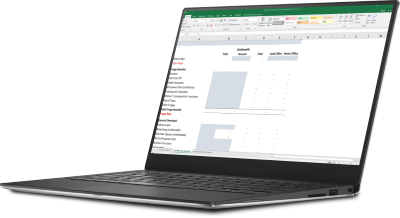If your architecture, engineering or construction firm has been contracted to provide services to state or local governments, it’s imperative that you understand your firm’s indirect cost rate and how to navigate the FAR and AASHTO Audit Guide.
4 Key Revenue-Losing Risks for Government Contractors
Of course, there are prudent business management activities that any business person would be well advised to adopt. But when it comes to government contracting, there are various risks related to overhead rate calculations. In particular, the four risks listed below need your attention:
-
The risk of improper labor charges, specifically as they relate to timekeeping, job costing, classification of labor costs and specific unallowable activities
-
Risks related to improper compensation, particularly as it relates to exempt vs. non-exempt employees, paid vs. unpaid overtime, bonuses, and FAR limits
-
Risks related to misclassification of costs, particularly when it comes to direct vs. indirect costs, allowable vs. unallowable costs, and misallocation of expenses relative to your firm’s chart of accounts and account categories
-
Risks related to the allowability of specific costs with a particular emphasis on travel, meals, vehicle costs, marketing costs, related party rent, and expenses related to employee morale
All of these risks get manifested in the audit process where your auditor may effectively require you to lower your overhead rate, which in turn, reduces your revenue.
The Solution: Manage Risks with Policies, Procedures, Documentation and Training
To maximize your revenue opportunity and to secure the highest allowable overhead rate, start with establishing:
-
Labor reconciliation policies and procedures
-
Payroll and related components policies and procedures
-
Accounts payable/cash disbursements policies and procedures
-
Segregation of FAR-unallowable costs in the accounting records policies and procedures
As part of the above policies and procedures, you’ll need your employees to follow and maintain a rigid documentation regimen that pertains to detailed receipts, expense reports, company credit cards, vendor invoices, and in general, any other documentation that provides support for the business purpose of the expense. And in order to make all of that happen, it's a must to have ongoing training of all staff on all of those policies and procedures.
When it comes to government contracting opportunities, the way you determine your overhead rates can mean the difference between profitability and at an extreme, loss of future contracting opportunities.
Need Help?
If you have questions or want guidance on your overhead rate structure, we can help. Our Government Contractors Group works closely with construction contractors, architects, engineers and other government contractors to help them understand how overhead rates work and how to maximize compensation.
Contact us online or call 800.899.4623.


